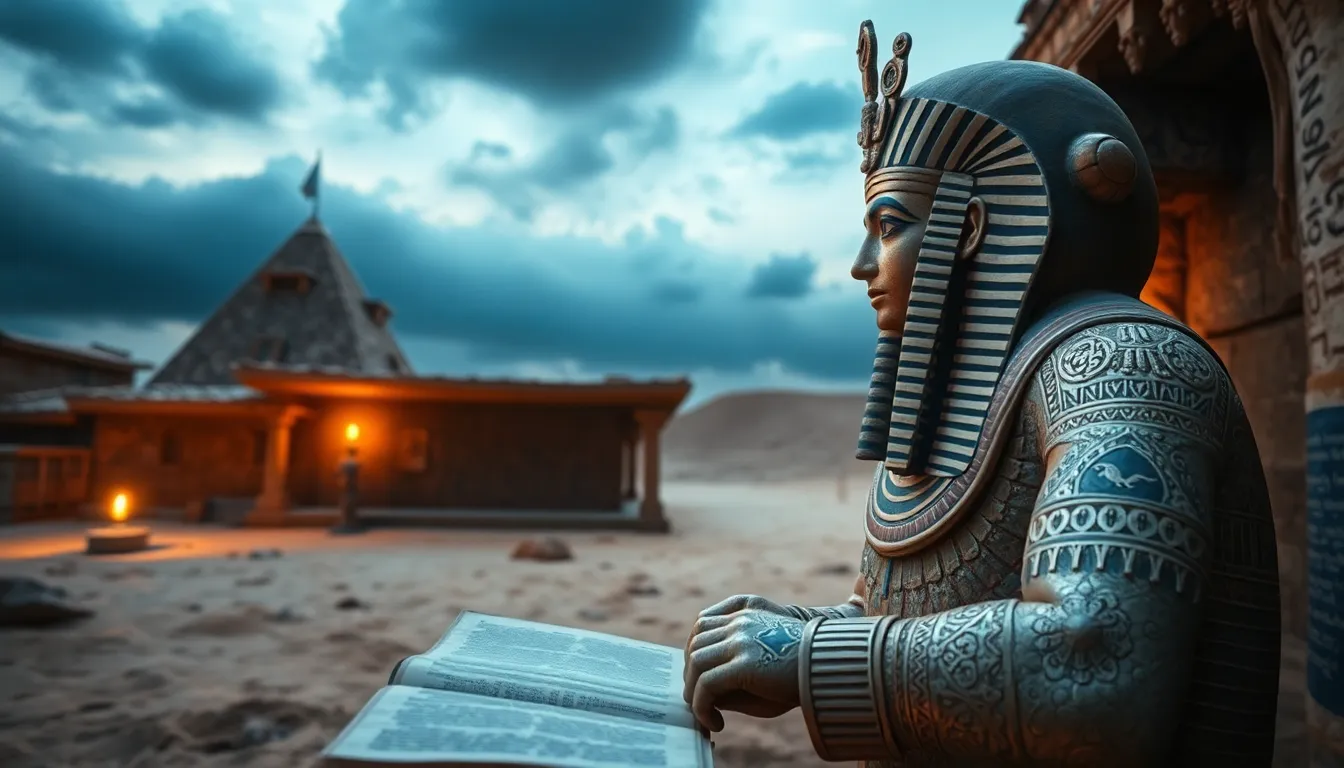The Book of the Dead: A Guide for the Deceased
I. Introduction to the Book of the Dead
The Book of the Dead, known as “The Book of Coming Forth by Day,” is an ancient Egyptian funerary text that serves as a guide for the deceased as they navigate the afterlife. Its significance lies not only in its spiritual and religious content but also in its role in the evolving beliefs surrounding death and the afterlife in ancient Egyptian culture.
Historically, the text dates back to the New Kingdom period (1550-1070 BCE) but draws upon much older traditions and beliefs about the afterlife. The purpose of the Book of the Dead is to provide the deceased with spells, prayers, and instructions to ensure a safe passage through the challenges of the afterlife, leading to eternal life.
II. Origins and Evolution of the Text
The origins of the Book of the Dead can be traced to ancient Egyptian funerary practices that predate its formal compilation. Early texts and inscriptions found in tombs, such as the Pyramid Texts and Coffin Texts, laid the groundwork for the Book of the Dead.
Over time, the text evolved, incorporating different spells and beliefs as it adapted to the changing religious landscape of Egypt. Variations of the Book of the Dead emerged during different dynasties, reflecting regional practices and beliefs. For instance:
- The Middle Kingdom saw the rise of the Coffin Texts, which influenced the later Book of the Dead.
- The New Kingdom texts became more standardized, with specific chapters dedicated to particular rituals and beliefs.
- Later adaptations included unique spells that reflected local customs and personal beliefs of the deceased.
III. Structure and Content of the Book
The Book of the Dead is composed of a series of chapters, each containing spells or prayers designed to assist the deceased in their journey through the afterlife. The structure can be summarized as follows:
- **Chapters**: The text is divided into numerous chapters, with some versions containing over 200 individual spells.
- **Sections**: Each section addresses specific aspects of the afterlife, including protection from demons, guidance from gods, and instructions for rituals.
Key themes throughout the Book of the Dead include the concepts of resurrection, divine judgment, and the attainment of eternal life. Common spells and prayers often included:
- The Opening of the Mouth ritual, which was believed to reanimate the deceased.
- Spells for protection against various dangers in the afterlife.
- Prayers invoking the assistance of gods such as Osiris, Anubis, and Thoth.
IV. The Role of the Book in Funerary Practices
The Book of the Dead played a critical role in ancient Egyptian funerary practices. Rituals surrounding burial were often elaborate, aimed at ensuring the deceased’s safe passage into the afterlife. Key practices included:
- **Mummification**: Preserving the body to prevent decay, allowing the soul to recognize its form.
- **Burial**: Tombs were constructed to house the deceased along with their belongings and the Book of the Dead.
- **Placement of the Book**: It was common to place copies of the Book of the Dead in the tombs, often written on papyrus or inscribed on the walls, to be used in the afterlife.
The importance of the text in the journey to the afterlife cannot be overstated, as it provided the deceased with the knowledge and tools necessary to navigate the challenges ahead.
V. The Journey Through the Afterlife
The afterlife in ancient Egyptian belief was depicted as the Duat, a complex and perilous place that the deceased had to traverse. The journey through the Duat involved facing numerous trials and challenges, including:
- **The Weighing of the Heart**: The heart of the deceased was weighed against the feather of Ma’at, symbolizing truth and justice.
- **Encounters with Demons**: The deceased faced various demons and obstacles that sought to prevent their passage.
- **Divine Judgment**: Gods such as Osiris played a crucial role in determining the fate of the deceased based on their deeds in life.
Successful navigation through these challenges led to eternal life, while failure resulted in dire consequences, including annihilation.
VI. Symbolism and Imagery in the Book
The Book of the Dead is rich in symbolism and imagery, with illustrations that convey deep meanings regarding life, death, and the afterlife. Common themes in the imagery include:
- **The Ankh**: A symbol of life, often depicted in the hands of deities.
- **The Scarab Beetle**: Representing rebirth and regeneration.
- **The Tree of Life**: Symbolizing the connection between the mortal world and the divine.
These symbols not only served to guide the deceased but also influenced later spiritual texts and beliefs, echoing through various cultures and religions.
VII. Influence on Later Cultures and Literature
The impact of the Book of the Dead extends beyond ancient Egypt, influencing early Christian texts and beliefs. Many concepts from the Book found their way into Christian eschatology, such as the ideas of judgment and resurrection.
Connections to other ancient cultures can also be observed, with parallels in the mythology of the Greeks and Romans regarding the afterlife. Modern interpretations and adaptations continue to explore the themes of the Book, reflecting humanity’s enduring fascination with death and the afterlife.
VIII. Conclusion: Legacy of the Book of the Dead
The Book of the Dead remains a crucial part of our understanding of ancient Egyptian spirituality and beliefs. Its continued relevance in contemporary spirituality speaks to the universal human experience of contemplating death and the afterlife.
As we reflect on the teachings of the Book, we gain insight into the ancient Egyptians’ understanding of existence and their quest for immortality. The enduring power of the Book of the Dead lies in its exploration of the human condition, reminding us of the timeless nature of our search for meaning beyond this life.




